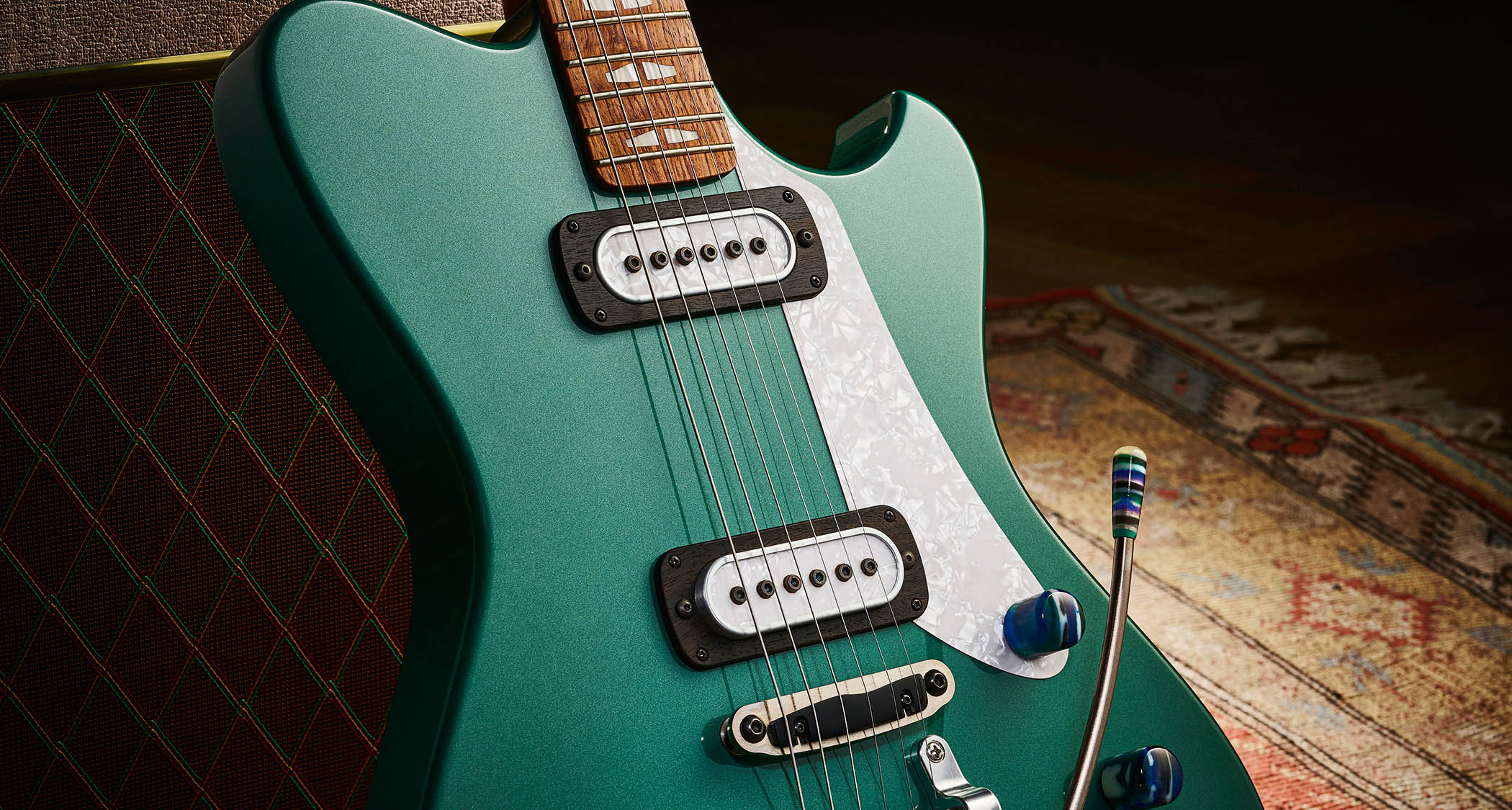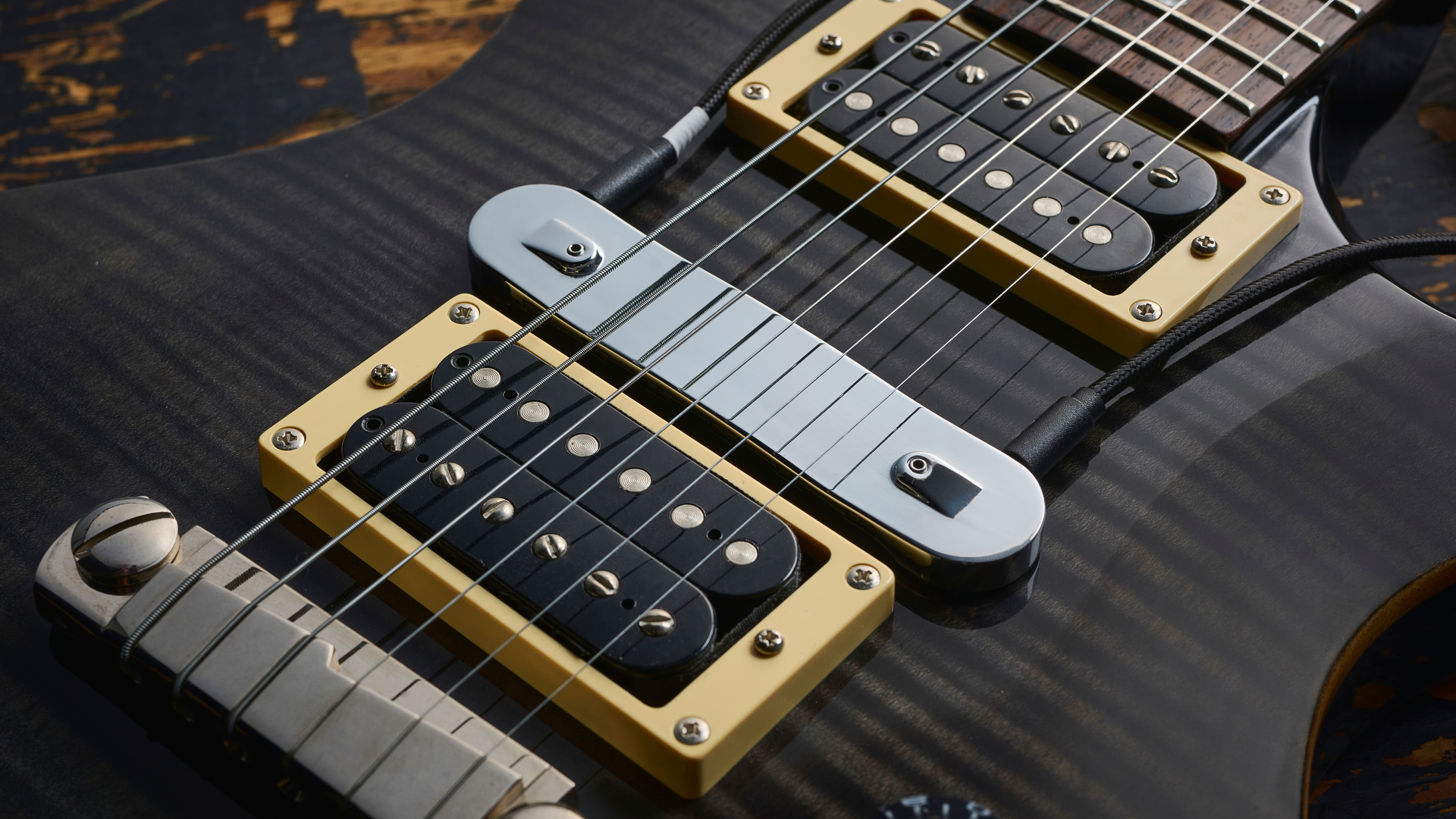Guitar World Verdict
Aside from all the detailed craft, it’s first and foremost a superb musical instrument that would sit just as well in a small Latin jazz combo as it clearly does on a much bigger rock-aimed concert stage. Above all, it’s far from someone else’s design – it’s a Powers Electric and our advice is to check one out as soon as you can.
Pros
- +
Hugely detailed and considered design using mainly proprietary hardware.
- +
Wonderfully vibrant response.
- +
Superb playability.
- +
Improved Bigsby-style vibrato.
- +
Gorgeous and expansive sounds.
Cons
- -
Hard to fault in any regard.
You can trust Guitar World
What is it?
You might think that Taylor Guitars’ master guitar designer, Andy Powers, would struggle to find the time to kick off a solo record. But Powers Electric is exactly that.
Taylor, of course, did come out with an electric guitar line back in 2008, but these instruments didn’t really engage the market, while guitars like the still-available thinline T5 certainly mix up the acoustic and electric worlds. But as the name suggests, the Powers Electric A-Type is quite simply a good ol’ electric guitar, not an electric/acoustic hybrid.
Except ‘just another electric guitar’ is exactly what the A-Type isn’t. It’s a very bold, different design. It’s not based on or inspired by any obvious vintage classic: not a Strat, Tele, Les Paul, ES-335 or any other we can think of.
There’s quite a retro style to the outline design, though, something that wouldn’t have looked out of place in a Supro or National catalogue from the 60s. But while we discuss the origin of the species with Andy in the feature that follows this review, what exactly do we have here?
The A-Type is based around a 632mm (24.875-inch) scale length, the same that’s used on Taylor’s Grand Concert and Grand Symphony, and just 3mm shorter than PRS’s ‘halfway’ 635mm (25-inch) scale.
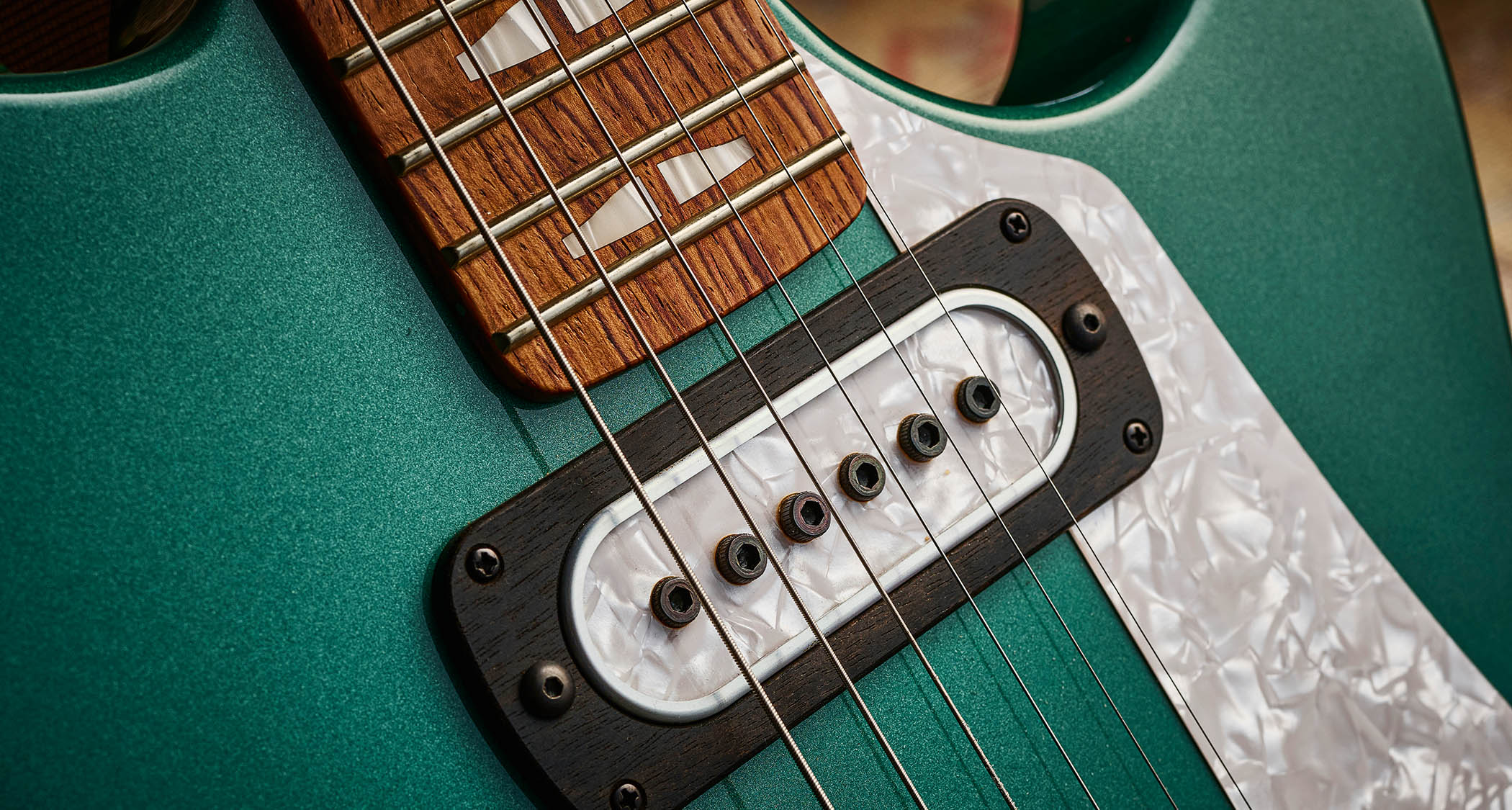
The body overall is a little longer and wider than those solidbody classics but relatively small when we consider the typical hollowbody world. At 343mm (13.5 inches) wide and 459mm (18 inches) from the base to the top horn, the A-Type’s body is a bigger proposition than the good ol’ Telecaster, which is closer to 322mm (12.7 inches) wide and 400mm (15.75 inches) long.
The vibrato looks like a Bigsby on which it’s obviously based, but we understand it’s machined from scratch by Powers Electric and given an artisan vibe
The A-Type does fall into the on-trend lightweight category, but that’s because it’s a true hollowbody design, and removing the nicely finished aluminium backplate you can peer inside.
The back and sides are cut from urban ash (a reclaimed wood that Taylor premiered) with a thin maple top, approximately 4.5mm in thickness, which is braced with two chunky bars in a V shape from the horns, narrowing to either side of the bridge and running the full length to the base.
While there’s some added thin wood-block reinforcement under the top between the pickups, there’s slightly thicker support under the bridge.
Then you can see the two pillars that take the bridge bolts (and connect the top to the back), which sit in another block, routed into the back, around 10mm to 12mm in height and slightly larger in outline than the bridge itself. Powers Electric calls it a “trussed” hollowbody. Why not?
Specs

Launch price: $3,799/£3,899/€4,299
Made: USA
Type: Double-cutaway ‘trussed’ hollowbody electric
Body: Urban ash back with solid maple top
Neck: 1-piece mahogany, ‘Powers Electric carve’ profile, glued-in
Fingerboard: Honduran rosewood, Italian acrylic ‘twin arch’ inlays, asymmetrical radius
Scale length: 24.875” / 632mm
Nut/width: Ebony/43.2mm
Frets: 21, jumbo
Hardware: High-carbon steel baseplate with Delrin saddle, machined aluminium Camtail vibrato tailpiece, enclosed tuners (chrome‑plated)
String spacing at bridge: 53mm
Electrics: 2x Powers Electric PF42 single coils, 3-way toggle pickup selector, master volumes and tone controls
Weight: 6.64lb/3.02kg
Options: FF42 pickup set, top-loading Hardtail bridge
Left-handed options: No.
Finishes: Silver Jade Mach 1 (as reviewed), huge number of hot-rod vintage colours – gloss opaque body, satin neck
Cases: Yes, ‘hard’ gigbag is crafted using materials that are inspired by the seat upholstery in classic Porches
Contact: Powers Electric
Build quality
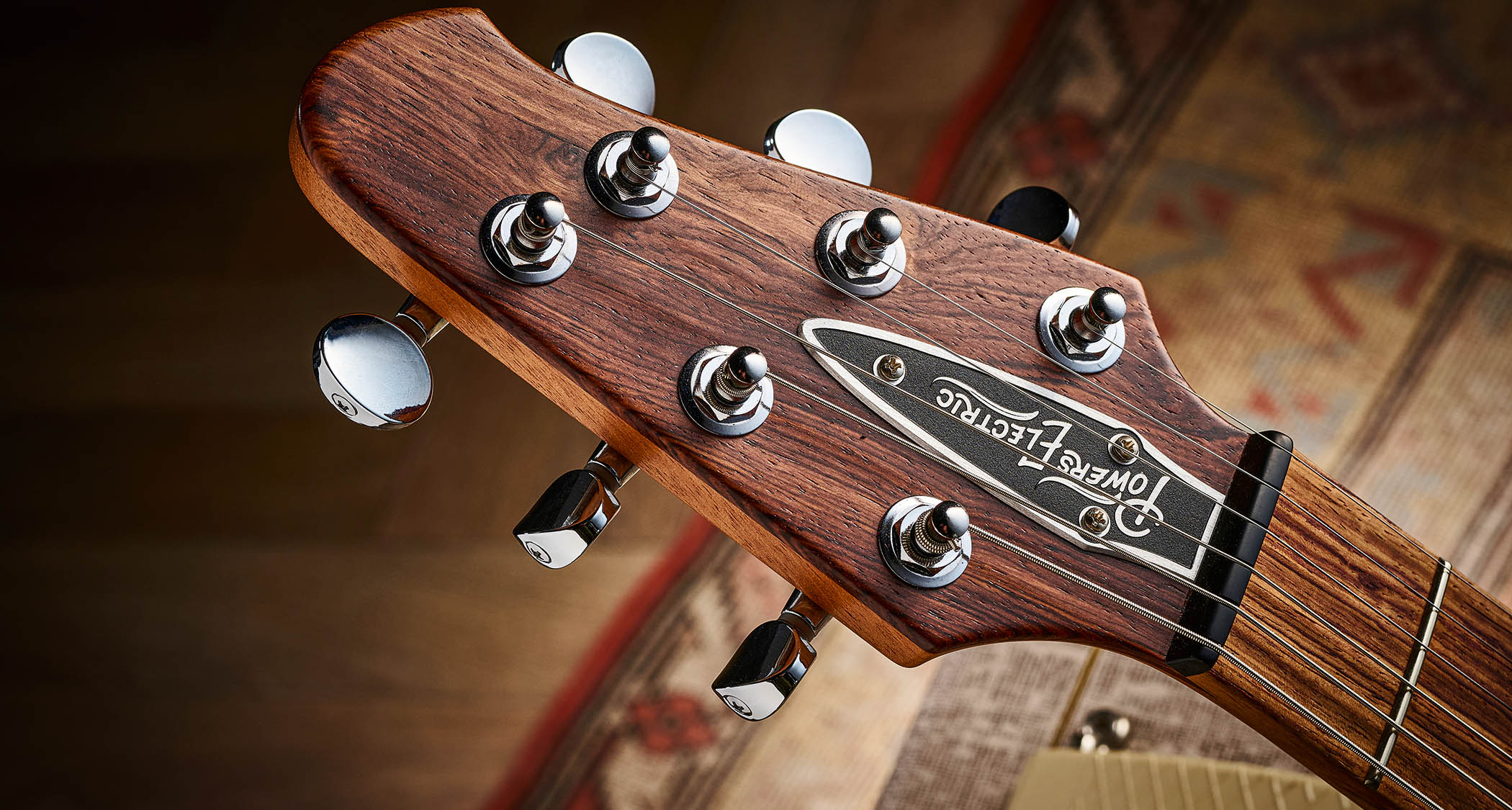
Build quality rating: ★★★★★
Aside from the light forearm curve and generous edge radius, there are no other comfort contours. And while the back of the guitar is flat, that braced top is actually lightly curved – or arched – in both planes. At the tip of the bass-side horn, for example, the overall body depth is close to 45mm, but measuring next to the bridge the depth there is around 53mm at its maximum, and then by the base strap button the depth drops back to 49mm.
The apparent ‘slab’ body design might suggest a bolt-on and yet here we have a glued-in mahogany neck that also forms the heel. It’s lightly pitched back to allow a pretty regular height at the bridge.
To be honest, the neck feels very acoustic-like with a slightly open-pore texture and clearly thin natural finish, and it’s only slightly paler than the light-hued Honduran rosewood fingerboard – with those acrylic ‘twin arch’ inlays – which has some beautiful dark striping.
It’s little surprise to see that both neck and fingerboard are quarter-sawn. Then we get another spin in that the fingerboard uses a dual ‘asymmetrical’ radius: it’s smaller on the bass side, flatter on the treble.
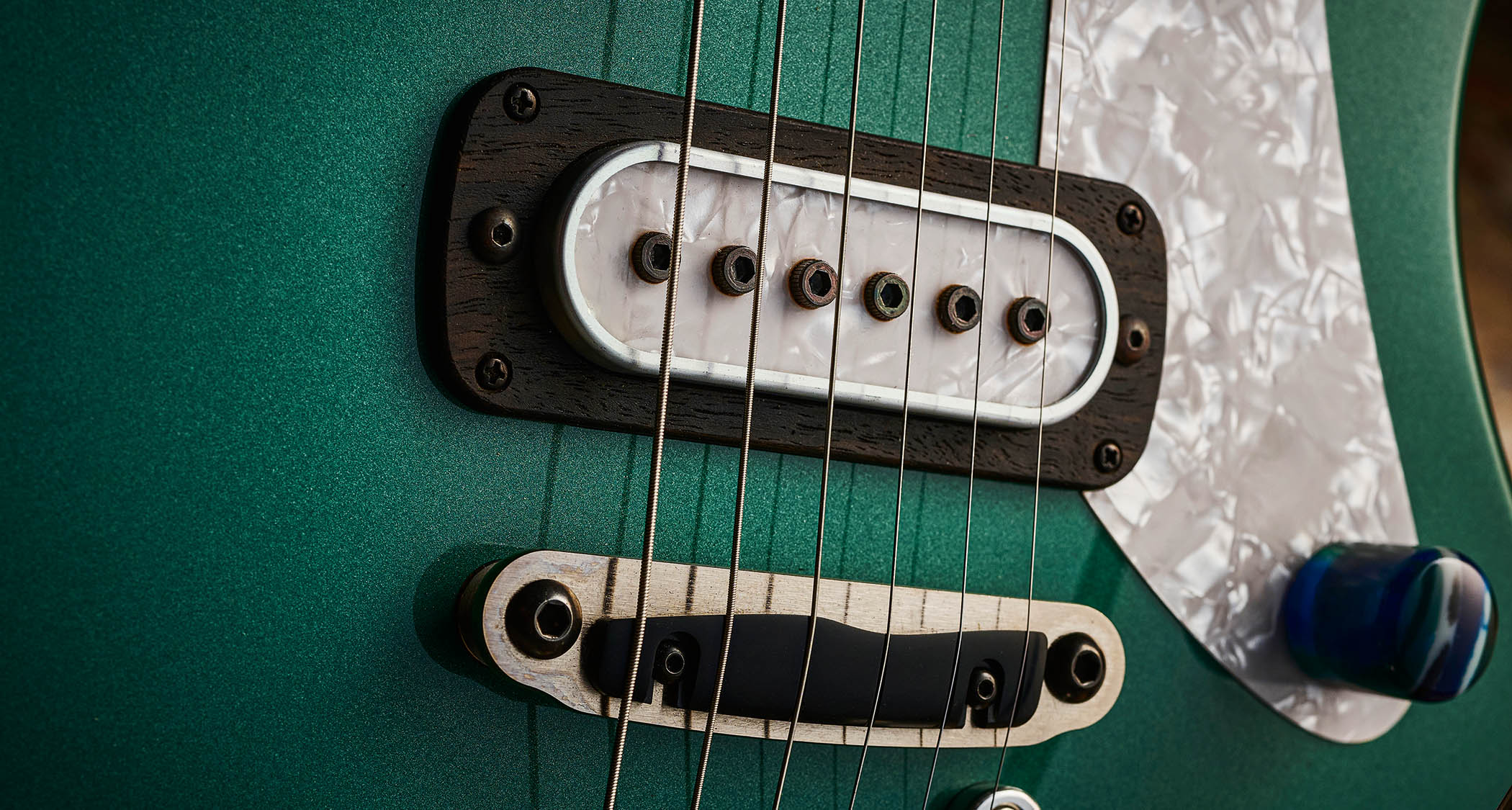
We only get 21 frets – another throwback to the 50s or 60s, we wonder? – and the impeccably installed wire is pretty big with a slight but noticeable, almost triangular section, as opposed to the more domed and rounded crown of most jumbo frets.
The back-angled headstock is faced with quite a thick piece of Honduran rosewood and again seems familiar but hard to precisely pin down – it’s a little Ernie Ball Music Man-like perhaps, but here it has offset three-a-side placement of the pretty regular-looking enclosed tuners.
As you’d expect with such a considered design, there’s straight string-pull over the perfectly cut nut, which the spec sheet says is ebony, but it looks more like the Delrin used for the saddle. And that aluminium truss rod cover is yet another carefully considered and well-executed touch; the truss rod itself is old‑school single action, we’re told.
If the neck and body are deceptively complex in design and execution, that theme continues to the hardware. The vibrato looks like a Bigsby on which it’s obviously based, but we understand it’s machined from scratch by Powers Electric, given an artisan vibe with that brand name that’s hard-stamped into the aluminium base.
While the string retainer bar has six independent sleeves that lightly roll when the vibrato is moved, it’s the camshaft-like pivot bar that is machined so each string wraps around a different diameter (the thicker the string, the smaller the diameter), while the high E wraps around the largest‑diameter collar.
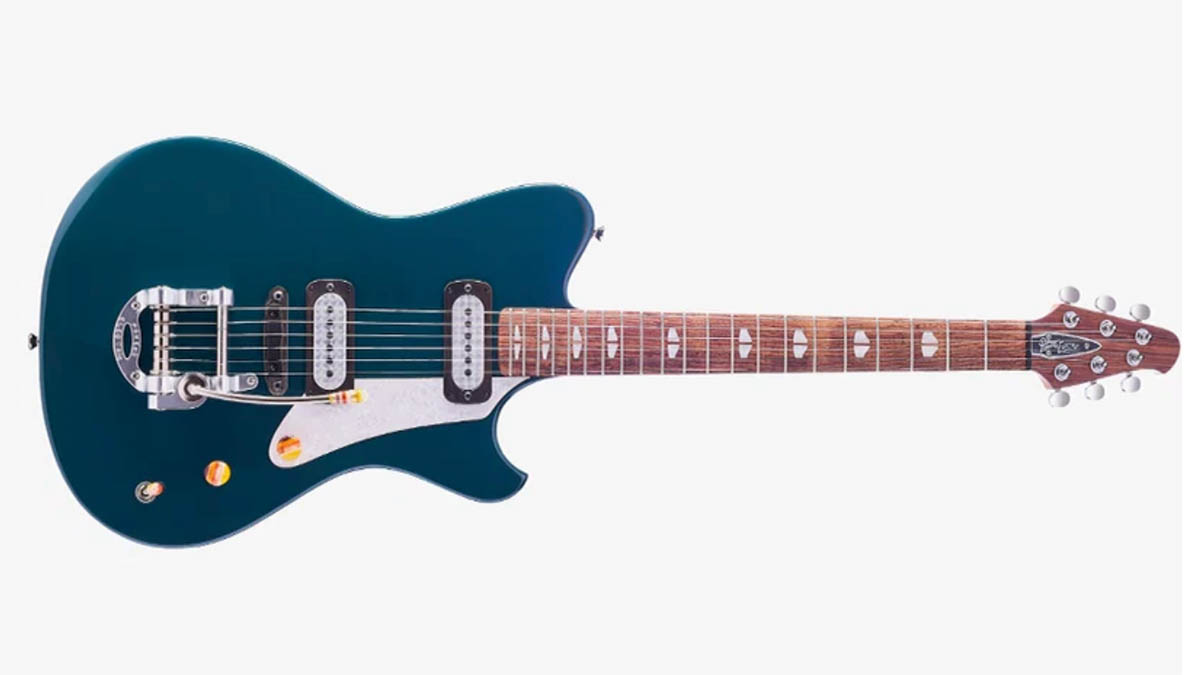
Another trick is the vibrato’s zero-point return, a small pin that stops the up-bend, which is how the A-Type is shipped. It almost feels like a hardtail with that engaged, with down-bend only, and thanks to that camshaft the strings stay pretty much in relative pitch as you bend, particularly chords.
But if that vibrato stop isn’t for you, just unscrew it and the vibrato can now be pulled up as well as allowing those light up/down shimmers that we all love about the original Bigsby design. It’s just one of the many hot-rod tweaks that might seem subtle but which add to the considerable musicality of the A-Type’s design.
The A-Type comes with either a top-loading Hardtail or (as here) that Camtail vibrato, and the bridge is the same on both. It’s devilishly simple with a lightly arched hard-steel baseplate through which two large bolts pass and thread into ferrules in the body.
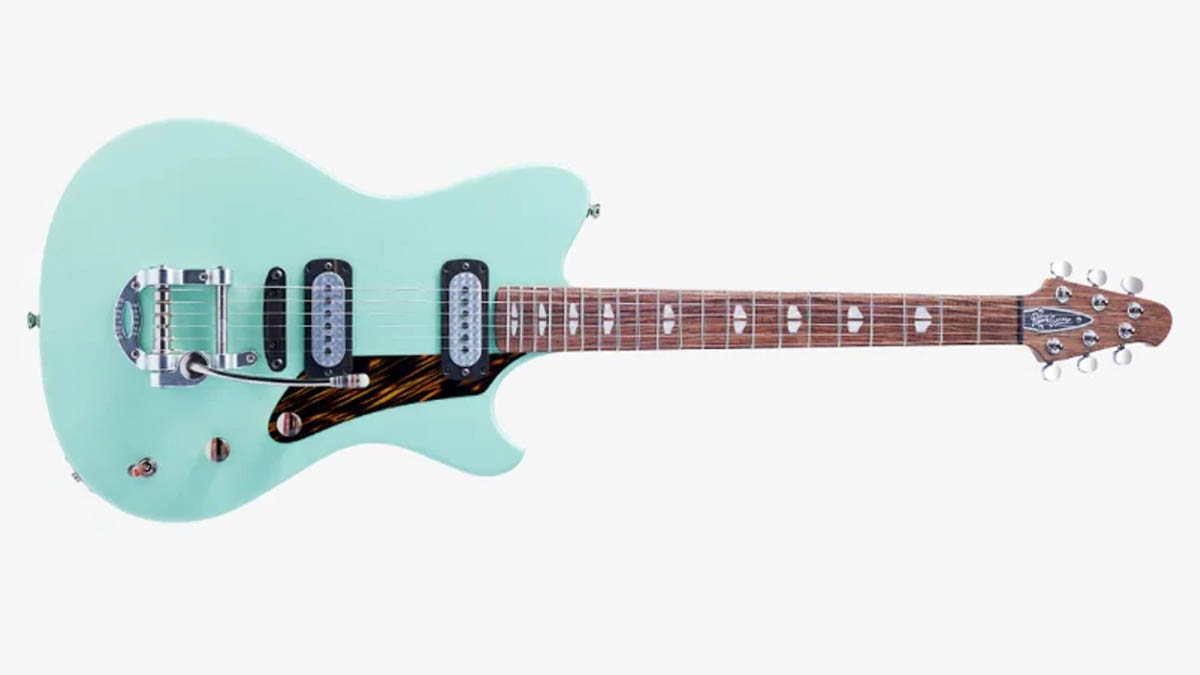
These effectively limit the height but don’t secure the bridge base; that’s achieved with two ‘jam nuts’, as they’re called, that not only determine the bridge height but also lock the whole assembly in place once tightened.
The saddle appears simple. It’s a single piece of Delrin, a relatively hard plastic, with light grooves that hold the string and are in contact with pretty much the entire length of the saddle. The front edge of the saddle has a pre-set compensation curve, and the overall position can be adjusted then locked down by two small Allen key bolts.
There’s another acoustic-like reference with the small glued-on pickguard in a mother-of-toilet-seat plastic that matches the fronts of the elegant-looking pickups. Aside from those open fronts, they’re completely encased in machined aluminium covers and the baseplate, and suspend in mounting rings that look like a dark or stained rosewood (or similar). The visible polepieces are Allen-keyed bolts and are easily adjustable like the overall treble and bass height of the pickups.
Playability

Playability rating: ★★★★☆
The neck does have that acoustic-like open-pore feel, but in the hand it disappears
Rather like the outline shape, the feel of the A-Type is both familiar but a little different. The weight is superb. The extended body length seems compensated for by its lightly offset waist, but there’s nothing to get used to in the least, especially when played seated, and strapped on it’s equally familiar and hangs beautifully.
The neck does have that acoustic-like open-pore feel, but in the hand it disappears. We have a relatively wide nut width (43.2mm with an airy string spacing of 36.5mm) and very regular, mainstream depth dimensions: 21.25mm at the 1st fret, 23mm by the 12th.

The profile is a pretty classic ‘C’, a great balance between full and thin, and the fingerboard edges are well rounded. Whatever effect that dual radius is giving us, well, the neck here feels very classic, and with a pretty standard string height and very little relief, everything feels extremely ship-shape.
For plenty of players, a Bigsby can look and feel like a piece of antique farmyard machinery – and we’d definitely suggest you also audition a Hardtail version – but its function is superb. And although we don’t have huge acoustic volume, there’s a lot more than our reference Telecaster. There’s undoubtedly a different response, too, with a pushy flavour of an archtop hollowbody – it’s a flavour, though, not the full taste.
Sounds
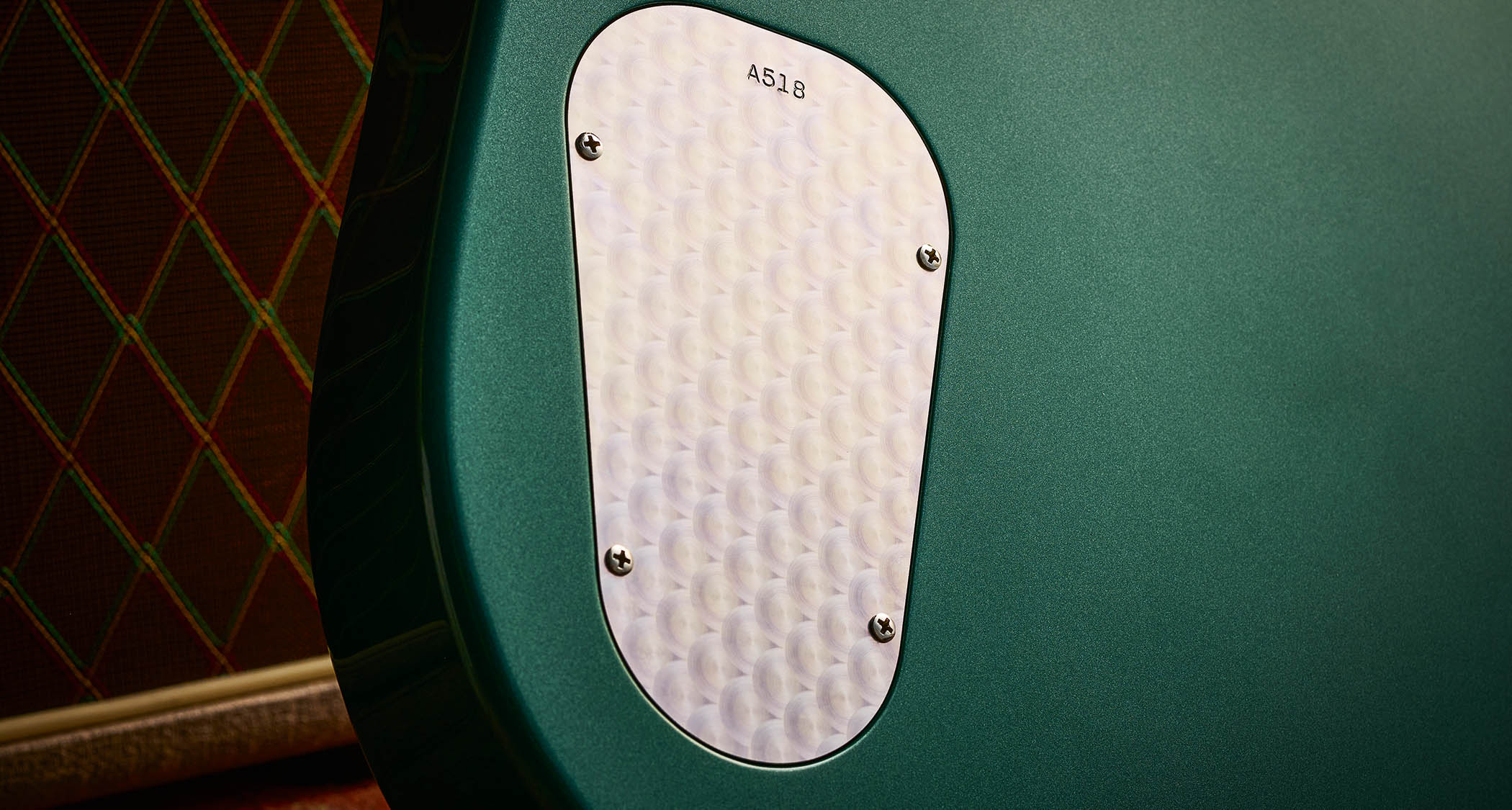
Sounds rating: ★★★★★
The hard-to-pigeonhole design is reflected in the A-Type’s sounds. These are single-coil pickups, although they are pretty quiet in terms of hum and buzz in general use, and are hum-cancelling with both pickups on.
While there’s a steely bite at the bridge, it’s not as abrasive as our Telecaster, and there’s a fullness to the voicing that does nod towards a classic-output humbucker or a P-90 but without the mid-push.
It’s a similar trick with the neck pickup, and again we’re in a P-90-ish mode here with a robust fullness and depth and just enough clarity on top. The mix, then, is noticeably fuller sounding than our Telecaster, as you’d expect. Our A-Type is also very stable in terms of tuning: overall, it’s a very in-tune guitar, too.
As you wind up the wick, that hollowbody flavour is very obvious, and with gain things get pretty lively – just lean into your amp for some musical feedback. That edge-of-chaos scenario might not be to everyone’s taste, but dropping back into more rootsy territory seems to be the A-Type’s default setting.
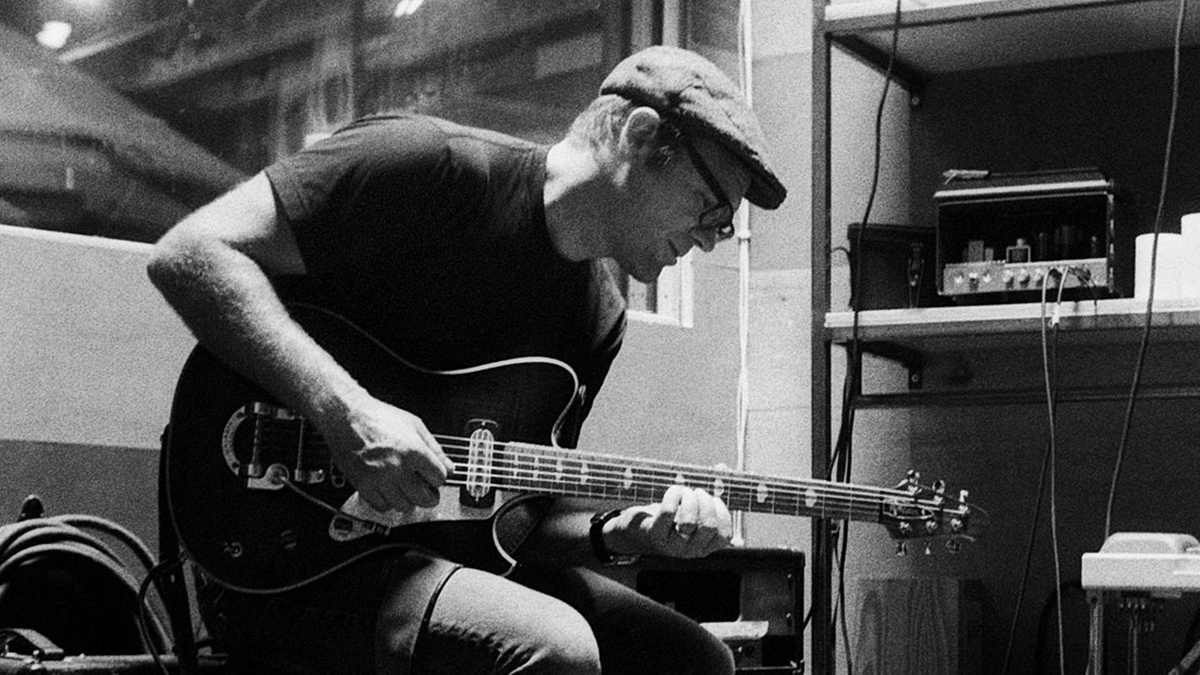
The volume control works really well to clean up an over-egged amp, and that tone control is really sensibly voiced
The volume control works really well to clean up an over-egged amp, and that tone control is really sensibly voiced – full ‘off’ it pulls back the highs, but it’s still a usable sound, and the two controls really are key to the kaleidoscope of voices we coax out of the guitar.
Despite the glossy exterior, there’s nothing remotely modern about the sounds we’re hearing, either. There’s a ‘loose’ open-sounding character to the acoustic response that informs the sounds we hear and feel to a certain extent. It’s a very vibrant, resonant guitar – and yet in every regard it’s well balanced. Just when you think you’ve got the measure of its powers, it surprises you. But let’s be clear: we’re smiling, not wincing.
Checking out a few Andy Summers’ performances with his recently acquired A-Types is very illustrative. Yes, it sounds like Andy with a Fender-y attack, but there’s noticeable depth, too. And with some level boost for a couple of his out-there solos, well, the A-Type sounds more like a characterful old ’Burst. We can’t help wondering if the ‘A’ in the name stands for alchemy.
Verdict
For many makers right across the price/quality range, a ‘new’ guitar involves someone else’s outline, off-the-shelf hardware and a couple of posh (or not) pickups. That is not in any way the premise here. True, it’s not exactly cheap, but the A-Type is one of the most detailed and considered new-design guitars we’ve had in our hands for a considerable time.

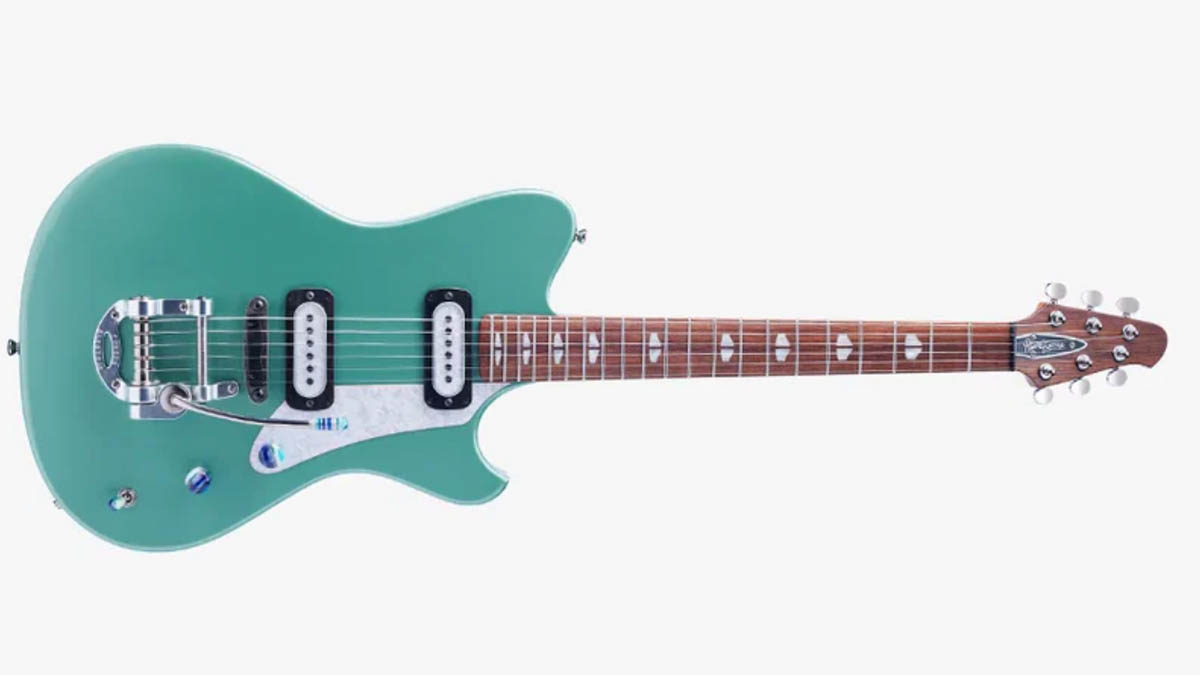
That would apply if it were a solidbody, too, but the hollow ‘trussed’ construction creates something rather different with echoes of a classic semi- or hollowbody response but without the physical size and with far from modern voices.
Aside from all the detailed craft, it’s first and foremost a superb musical instrument that would sit just as well in a small Latin jazz combo as it clearly does on a much bigger rock-aimed concert stage. Above all, it’s far from someone else’s design – it’s a Powers Electric and our advice is to check one out as soon as you can.
Could this be one of the most unique and musically inspiring electric guitars we’ve ever encountered? Quite possibly.
| Test | Results | Score |
|---|---|---|
| Build quality | Impeccable build as you would expect from an Andy Powers guitar. | ★★★★★ |
| Playability | Great neck, perfect balance. | ★★★★★ |
| Sounds | All the clarity of a classic single-coil guitar but with the resonance of a hollowbody, it is hard to pigeonhole. | ★★★★★ |
| Overall | Impossible to fault. A high-end original with a timeless vibe. | ★★★★★ |
Also try
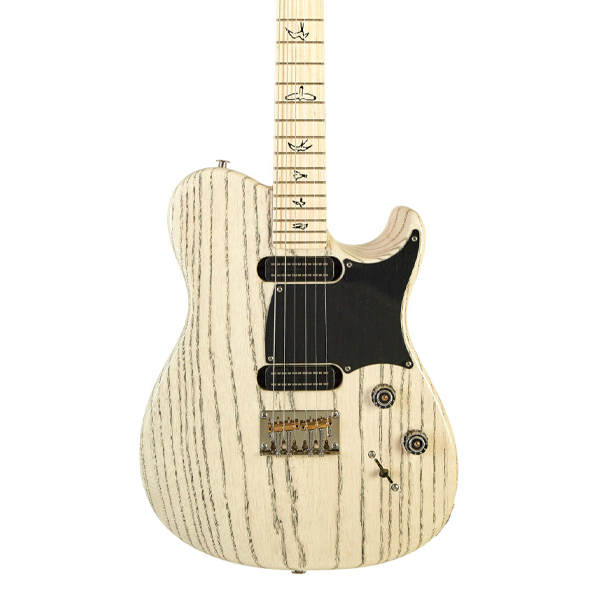
($2,899/£3,099)
"The NF 53 is the simplest guitar PRS makes in its USA lines: three sounds and the truth that an electric guitar is the sum of its parts. And when those are high-quality, refined and evolved to such a high level as this, the result is astonishing."
Read our review

(£3,940)
"It’s not just the immaculate craft on show; it’s a real-world player’s guitar and would be a crime to keep cosseted in a case or gigbag."
Read our review
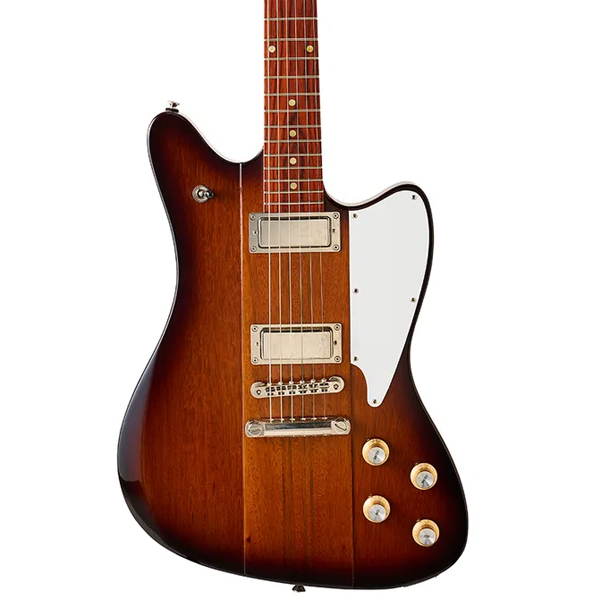
(£3,999)
"Somehow this sensible, compact take on the ol’ ’Bird not only removes the physical bulk but seems to enhance the voice, too, and while strapped on or seated nothing gets in the way... A vintage classic that never was.
Read our review
Hands-on videos
Peach Guitars
The Music Zoo
Tim Pierce
Powers Electric
The Music Emporium

Dave Burrluck is one of the world’s most experienced guitar journalists, who started writing back in the '80s for International Musician and Recording World, co-founded The Guitar Magazine and has been the Gear Reviews Editor of Guitarist magazine for the past two decades. Along the way, Dave has been the sole author of The PRS Guitar Book and The Player's Guide to Guitar Maintenance as well as contributing to numerous other books on the electric guitar. Dave is an active gigging and recording musician and still finds time to make, repair and mod guitars, not least for Guitarist’s The Mod Squad.
“Even standing with the guitars is tricky”: Ritchie Blackmore's health sparks concern after update from wife and musical partner Candice Night
5 lo-fi guitar chords to add to your progressions
“The rest of the world didn't know that the world's greatest guitarist was playing a weekend gig at this place in Chelmsford”: The Aristocrats' Bryan Beller recalls the moment he met Guthrie Govan and formed a new kind of supergroup
